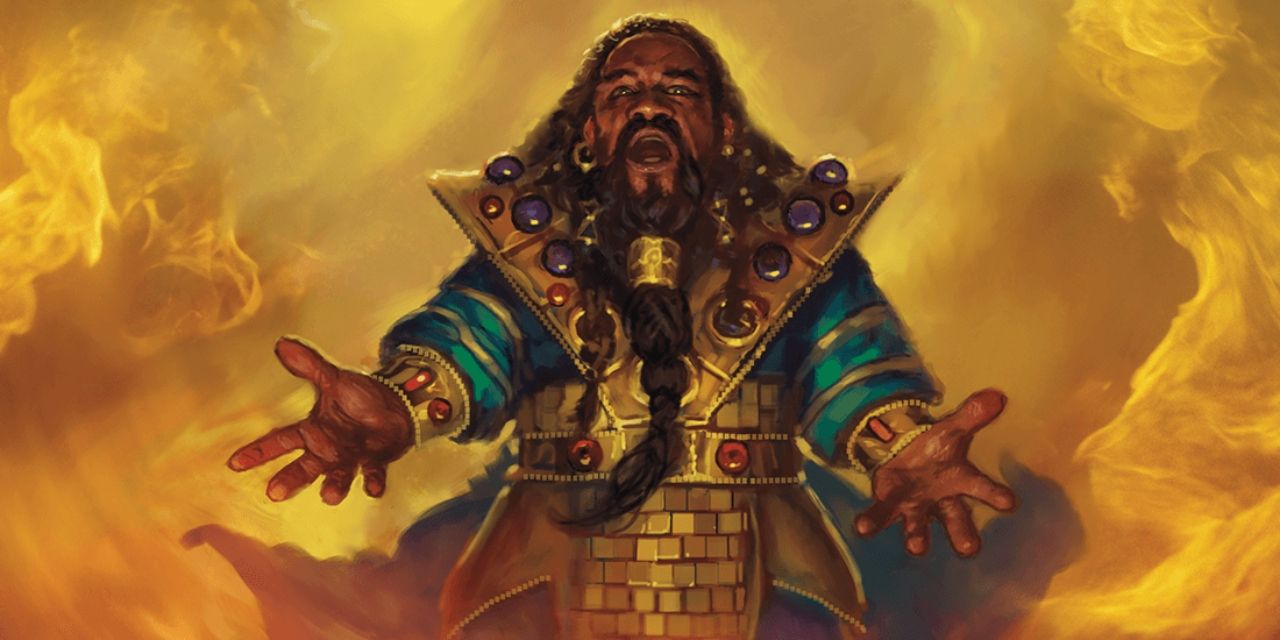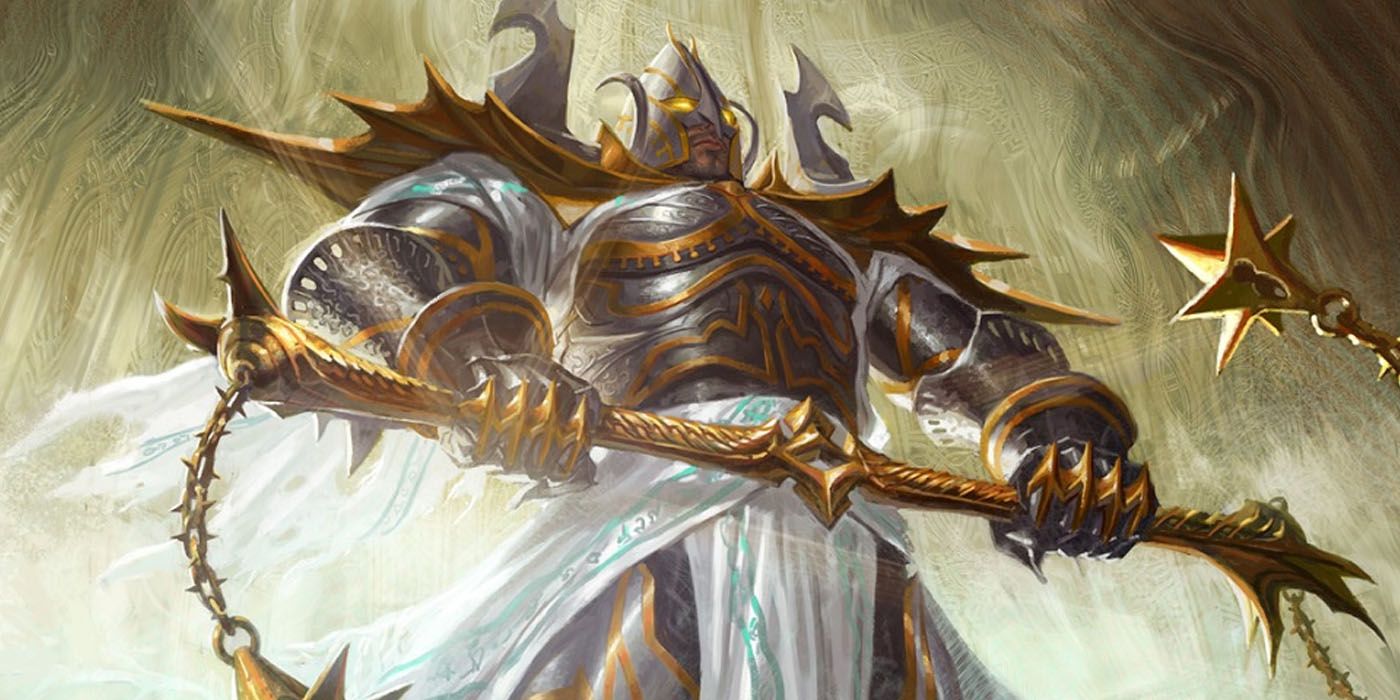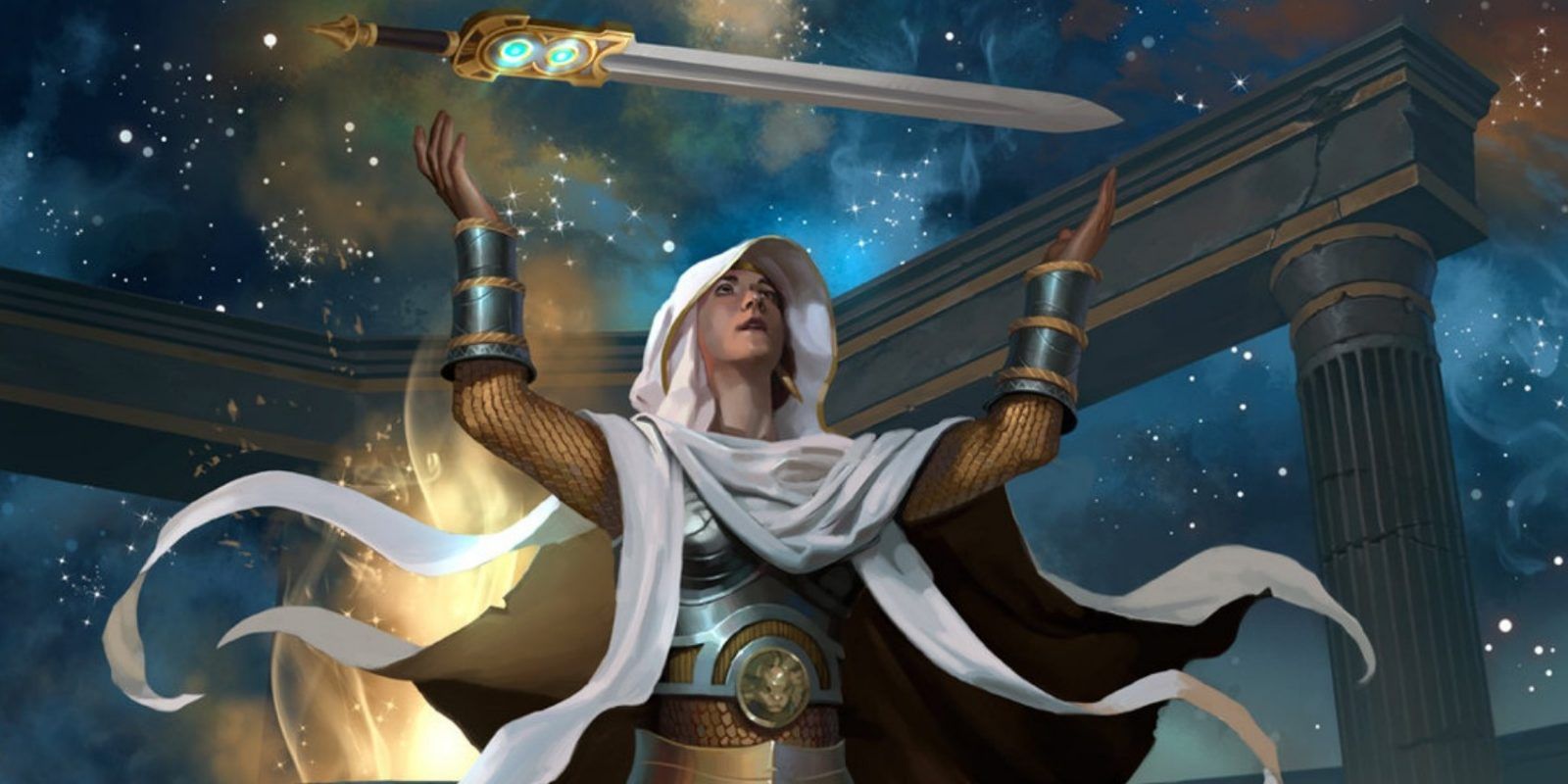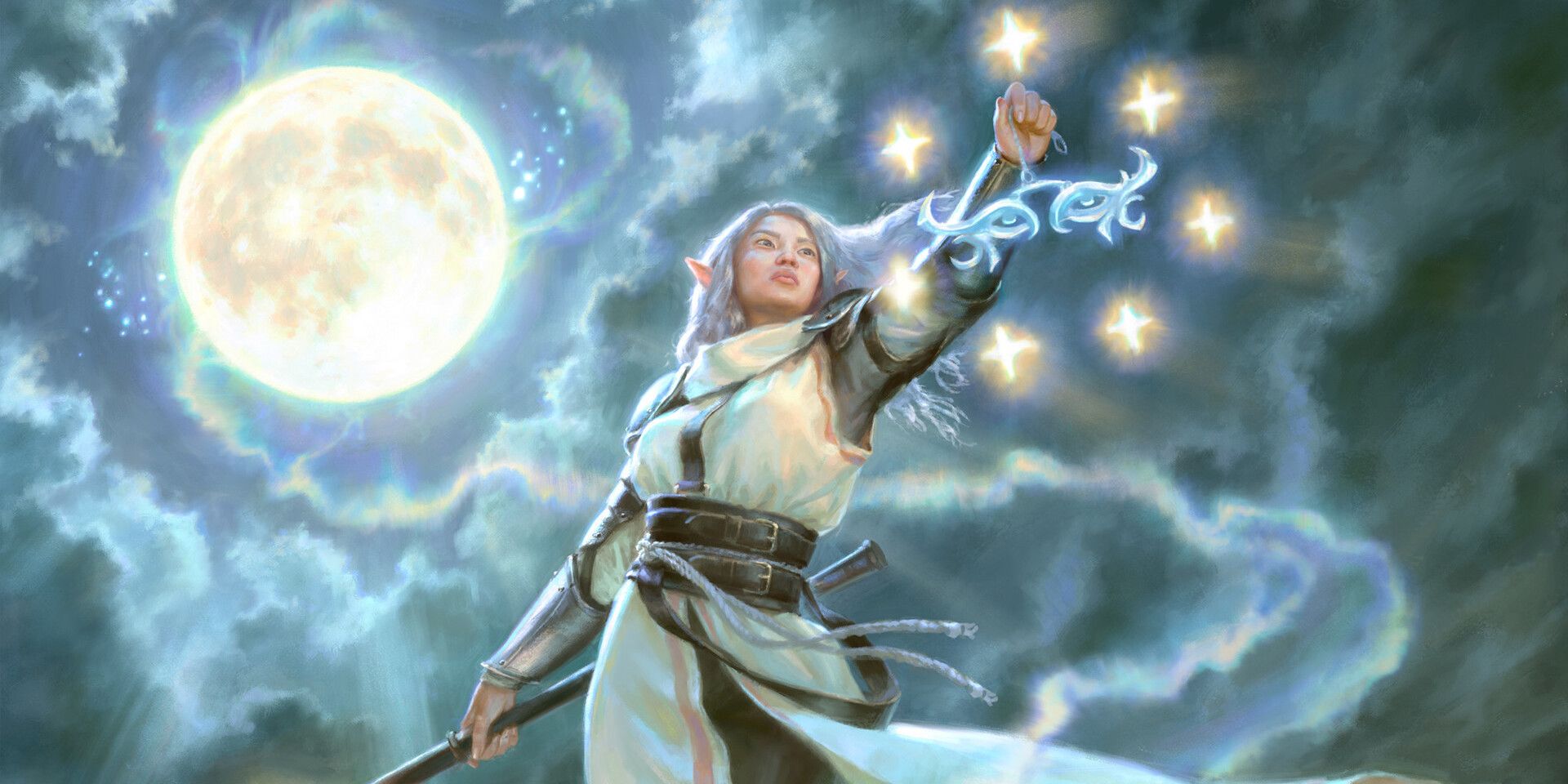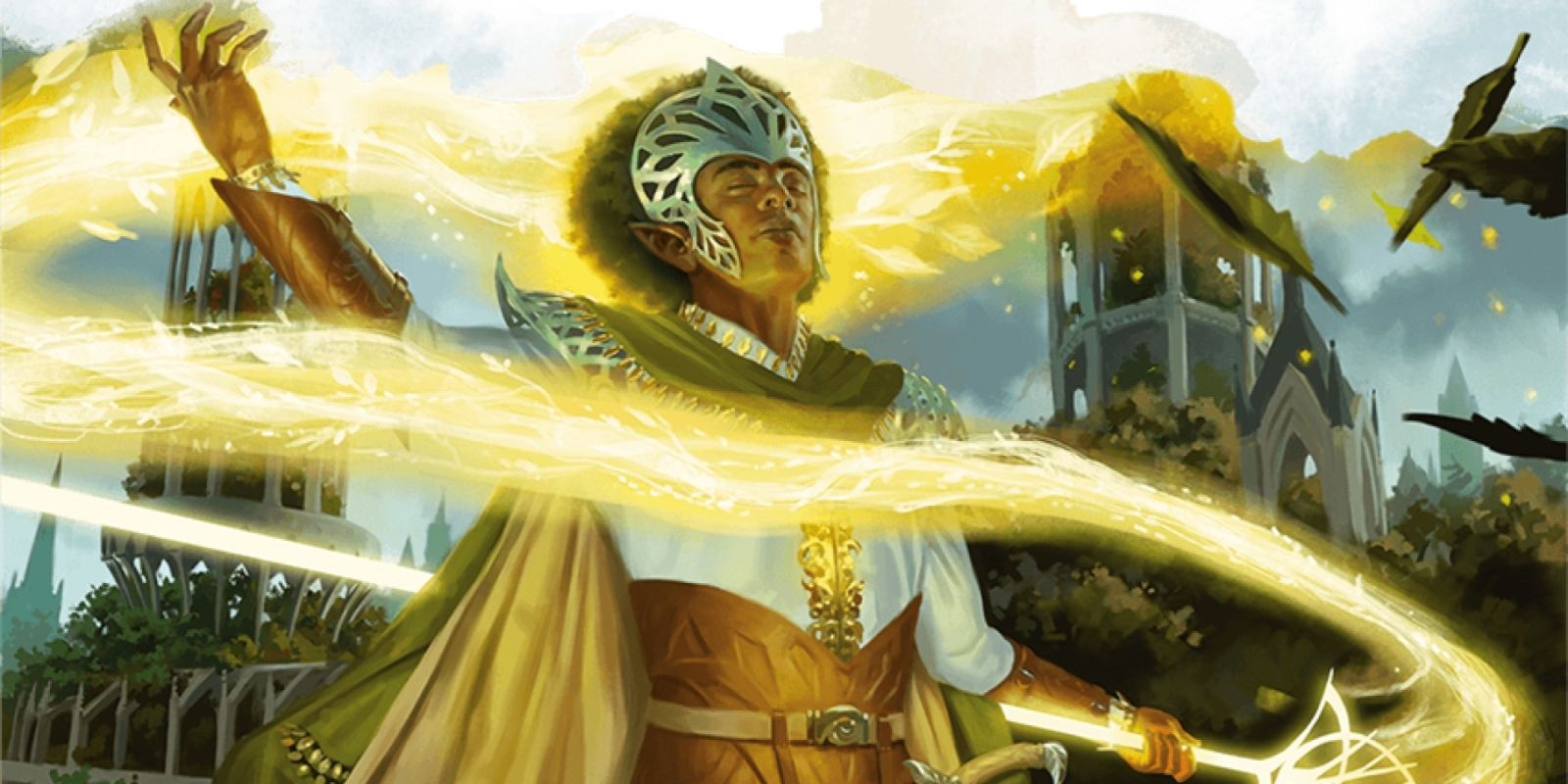Dungeons & Dragons is continuing its not-so-surprising rise in popularity, and with it a host of new players are looking to involve themselves in role-play and character work on a greater level. Many seek ways to involve themselves further in their character's class and frame of mind. The Cleric has been around since the inception of D&D's first edition, and it's been a strong pillar of its core gameplay.
Still, the Cleric is such a well-known and defined class that players often find it a struggle to role-play them in a unique way. Clerics are often servants and (sometimes) vessels for their chosen deities, and that can be hard to represent on a more grounded level, especially at lower levels without some behind-the-scenes work with the Dungeon Master to really bring the character and their faith to the forefront. Here are five things a player can take into account when planning out the character progression and role-play potential for their Cleric.
Pick a Unique Deity
A deity and the player character's relationship with them can really determine how much a player enjoys their Cleric. The god-of-light and all-encompassing lawful good deity are concepts that have been done time and time again and may result in a Cleric that feels stale. Sit down with the Dungeon Master and consider some alternatives.
Perhaps the PC follows a deity who is one half of the same god, one striving for order while the other sows chaos. Maybe they worships a triumvirate of deities who are allied out of convenience. There are so many narrative avenues to take with a cleric's deity, and through fair discussion with a DM, that unique deity concept could be the key to making a Cleric who stands out from the rest.
Consider a Deity's Tenants
A core element of any faith, especially those in a fantasy setting, is its set of principles and beliefs. These bot represent a character's chosen deity and make up the foundations of their religion. Think hard about how a Cleric's faith is structured. How many rules or laws govern how a character must act, or the challenges they face. Where can a line be drawn between heretical branches of these tenants and the core belief system? Construct the foundations of a character's faith, then have them act in accordance with those values. Maybe their faith encompasses a variety of deities or just one that claims to be the only deity. The choice is entirely up to both the player and the Dungeon Master to plan out.
RELATED:
What Is the Deity's Stance On Geo-Political Issues?
Geo-politics are often a part of most settings, homebrew or not. However a deity's stance on a world-defining event or conflict could be radically different from another deity's and even from their own flock of followers. It could even differ between the many denominations of their faith. Maybe one denomination has a particular stance on a conflict between nations because their monastery is based in one of these nations, or the other nation has sided with a rival denomination. Maybe the faith itself has had a schism, with two figureheads warring against each other.
It's up to the player to decide exactly how their Cleric may approach these various issues, what their deity's stance may be, and what the Cleric thinks their deity's stance is -- which are two radically different concepts.
Create Unique Rituals for the Cleric to Follow
Spells are a core features of any Cleric's arsenal, as they are tools bestowed upon them by their deity to perform divine miracles in the face of overwhelming odds. Players can really hone in on this divine power and make their Cleric seem more like a divine instrument of their deity's will than just another spellcaster. Pick a few major spells that the Cleric uses when truly desperate and create a small ritual around them. It could be anything from drawing a circle on their allies' armor to casting Death Ward or Sanctuary, or it can be a sermon or saying that invokes the will of their deity. Be careful to always keep in mind turn time when you perform these actions.
Flesh Out the Cleric's Order
One of the key elements to any Cleric's day-to-day operations relies on the order they originate from. Really take the time to work with the Dungeon Master and plan out how this order operates. Maybe the order itself is from a single monastery deep in the mountains, and this Cleric is the only warrior of the faith.
Alternatively, this Cleric's monastery could have been abandoned, cast out for perceived acts of heresy by other denominations of the faith and forced to form an underground coven, lingering in the waterways and sewers of a large, bustling city. Figuring out the general practices and the current condition of a Cleric's order are key elements in helping a player form their decisions about how that character would act based on the situation at hand.

